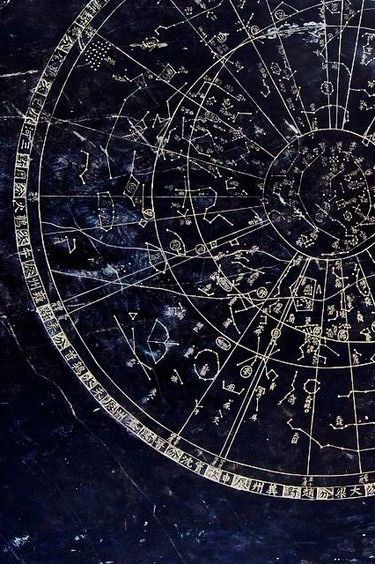#hesiod
Night
Like darkness, the night signifies the pre-cosmogenic, pre-natal darkness preceding rebirth or initiation and illumination, but it is also chaos; death; madness; disintegration; reversion to the foetal state of the world.
Night is also, according to Hesiod, the ‘Mother of the Gods’, the enveloping, maternal aspect of the feminine power, usually symbolized by a female figure with a star-spangled veil, holding a child, one black (death) and one white (sleep), on either arm; or by the crescent moon, or poppies, or the owl, or black wings.
As all-devouring time, day and night can be depicted as a white and a black rat.
Going by night symbolism esotericism.
[Source: An Illustrated Encyclopedia of Traditional Symbols by J.C. Cooper]
Post link
Hesiod and Hávamál: Transitions and the Transmission of Wisdom
Hesiod and Hávamál: Transitions and the Transmission of WisdomLilah Grace Canevaro
Oral Tradition Volume 29, Number 1
This article offers fresh insights into Hesiod’s Works and Days by comparing it with the Eddic Hávamál, a didactic poem far removed in terms of geography and date, but compellingly close in subject matter, construction, and transmission. It finds parallels between the poems in…
I’ve come to make an announcement: Prometheus is a bitch-ass motherfucker. He stole my fucking fire. That’s right, he took his Titan-fuckin’ quilly fennel stalk out and he stuck it in my fucking fire, and he said his stalk was THIS BIG, and I said, “That’s disgusting!” So I’m putting a callout passage in Hesiod’s Theogeny: Prometheus, you’ve got a small liver. It’s the size of this pomegranate except WAY smaller. And guess what? Here’s what my gift to humanity looks like. PFBPFT! That’s right baby, all curves, no dick, no testes– look at that, she looks like two domes and a clam. He stole my fire, so guess what? Pandora’s gonna fuck the EARTH. That’s right, this is what you get: MY SUPER LASER PLAGUES!! Except we’re not just gonna plague the Earth. I’m gonna go higher; I’m feeding Prometheus’s liver TO A BIRD! How do you like that, Odysseus? I FED HIS LIVER TO A BIRD, YOU IDIOT! You have twenty-three hours before the liver drrrrroplllllllets hit the fucking Earth! Now get outta my fucking sight, before I plague you too!
Ουρανος
Ouranos was the primordial god of the sky. The Greeks imagined the sky as a solid dome of brass, decorated with stars, whose edges descended to rest upon the outermost limits of the flat earth. Ouranos was the literal sky, just as his consort Gaia was the earth.
Ouranos and Gaia had twelve sons and six daughters. He locked the eldest of these - the giant Kyklopes and Hekatonkheires - away inside the belly of Earth. Gaia suffered immense pain and persuaded her Titan sons to rebel. Four of these positioned themselves at the corners of the world, ready to grasp their father as he descended to lie with Earth, while the fifth, Kronos, took his place in the centre and there castrated Ouranos with an adamantine sickle. The sky-god’s blood fell upon the earth, producing the avenging Erinyes and the Gigantes.
Post link
Title page from the RA’s copy of Compositions from the Works, Days, and Theogony of Hesiod. / Designed by J. Flaxman. Engraved by William Blake. - London : published by Longman, Hurst, Rees, Orme & Brown, 1817

Looking closely, you can see Blake’s stipple technique in the engravings which give them a very soft appearance.
Post link
Genealogy of Hesiod’s Theogony (a simplified version), handwritten by yours truly for y’all. This stuff is really interesting. I had no idea how complex the divinities were before Kronos. For Bonus points: count how many times there’s a “+ Zeus” on this genealogy!
Post link
From Didion to Hesiod: The Center Will Not Hold - JSTOR Daily
Because new articles mentioning “Works and Days” aren’t written every day. Thank you, @jstor.
“…tell of Zeus your father in your singing. Because of him mortal men are unmentioned and mentioned, spoken and unspoken of, according to great Zeus’ will. For easily he makes strong and easily he oppresses the strong, easily he diminishes the conspicuous one and magnifies the inconspicuous, and easily he makes the crooked straight and withers the proud.” –from the opening of Hesiod’s Works and Days, translated by M.L. West (oxford world’s classics)
Many models recur as a means of describing a sense of powerlessness over fate, or the varied changes of life. But there is a deeper lesson in the ‘wheel of fortune,’ and that is the fallacy of believing in straight lines and linear-trajectories. In the modern age there is a growing emphasis on ‘sustainability’ over the traditional capitalist virtue of ‘growth,’ this too can be seen as a call to nurture the cyclical nature of life instead of out of control consumption.
I once heard this sort of fallacy described regarding the erroneous manner in which some interpret Darwinism and theories of evolution. There is no apex of strength and power that species have evolved towards, rather as environments continuously change it is the most responsive, adaptable, who is deemed the fittest.
The state of the universe is change, like a moving wheel. We hold on for as long as we’re able.








